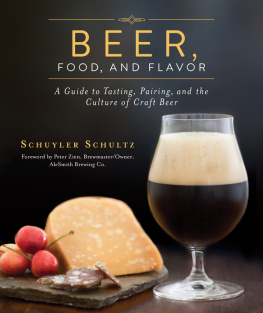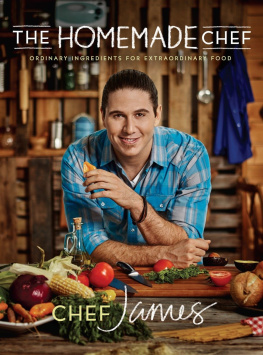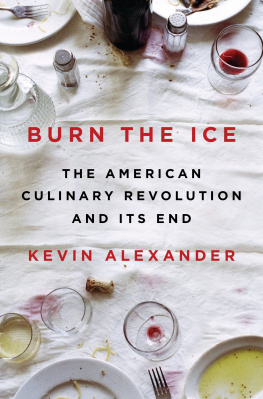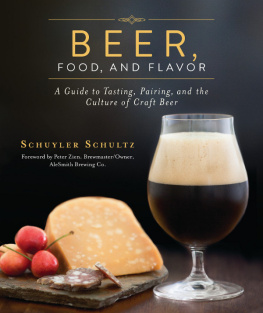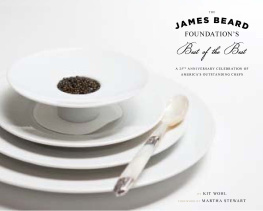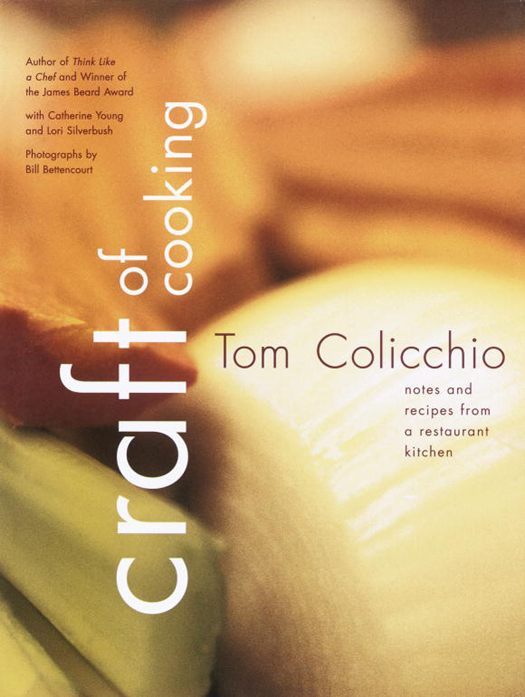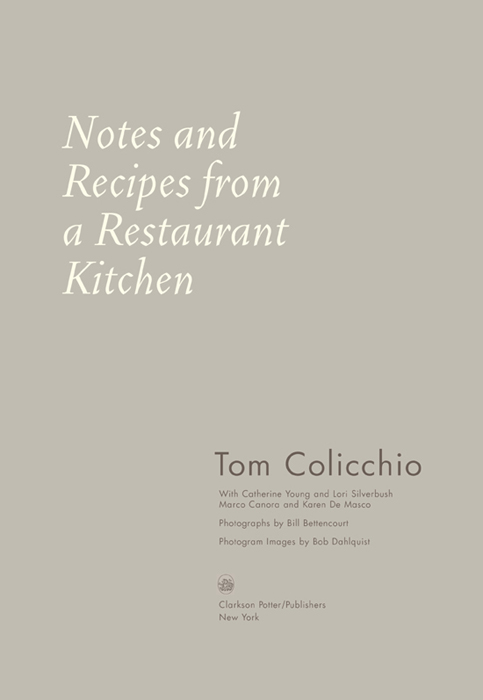Text copyright 2003 by Tom Colicchio
Photographs copyright 2003 by Bill Bettencourt
All rights reserved. No part of this book may be reproduced or transmitted in any form or by any means, electronic or mechanical, including photocopying, recording, or by any information storage and retrieval system, without permission in writing from the publisher.
Published by Clarkson Potter/Publishers New York, New York Member of the Crown Publishing Group, a division of Random House, Inc.
www.crownpublishing.com
CLARKSON N. POTTER is a trademark and POTTER and colophon are registered trademarks of Random House, Inc.
Design by Bob Dahlquist
Library of Congress Cataloging-in-Publication Data is available upon request
eISBN: 978-0-7704-3390-1
v3.1
In loving memory of our grandparents,
Esther Corvelli and Seymour Silverbush.
T.C. and L.S.
WHEN I OPENED C RAFT in March of 2001, newspapers and food reviewers credited me with a lot of lofty ambitions, like trying to educate the New York diner or to change how Americans dine. Critics wrote that the menu at Craft was a maze and a challenge to diners; that I was seeking to unsettle complacent New Yorkers, demystify food, mystify eaters, and change the face of American dining. Whew! I was flattered ( I guess ) but I never really understood the fuss. One reporter asked me, What was your objective in opening Craft? pen at the ready for a lecture about my food philosophy. For the record: I dont have a food philosophy. So, I answered: Make good food. And I meant it. My objective was to make good food. That was all .
Since I became a chef, people have always asked me what I like to cook at home. I think theyre a little disappointed when I answer: simple food; some roast fish, a little braised meat, maybe a side of vegetables. But this is really the case; at the end of the day my weary palate craves simplicity. Which is not to say bland food, or even comfort food. In fact, when prepared well, simple food can have an integrity and depth of flavor that fancier dishes may lack. There is something about a great piece of meat, braised slowly in its own juices, the flavors rounded out with a hint of butter. Or a simply roasted vegetable, its sugars intensified into caramel, but still essentially, recognizably, itself. It feels clean to me to cook this way; there is clarity to the flavors, a chance to really get at the essence of the ingredient. This is the way I like to cook at home .
When the opportunity arose to open a second restaurant I decided on two conditions: First, the new place had to be in Manhattan close to Gramercy Tavern ( Craft is right around the block ) and second, it had to embrace something I cared about. I bounced ideas around and toyed with different food idioms, all the while cooking the food I liked to eat at home for my family. Finally it dawned on me. If I loved this kind of foodsimple, ingredient-driven, soulful dishes centered around single ingredients ( served family-style, naturally ) probably other people would as well. That is, if they could get over the mental hurdle of what restaurant food should be .
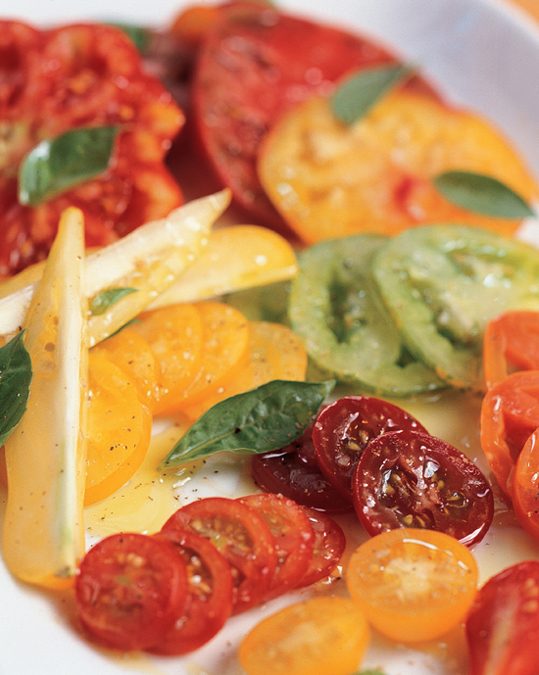
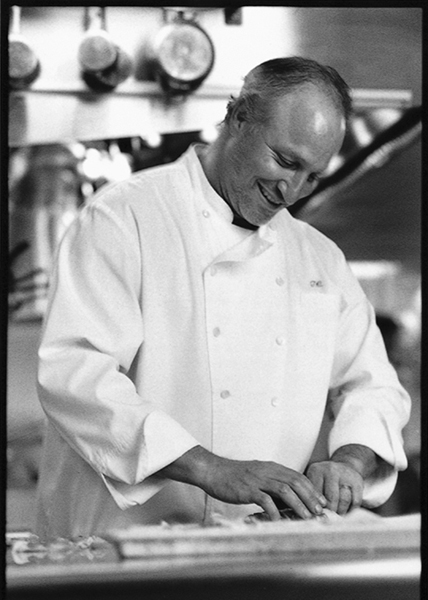
I started to catalog the types of restaurants where family-style food was de rigueur: Carmines, a boisterous Midtown Italian-American famous for its gargantuan portions and dig-in! mentality. Chinatown, where my friends and family like to order a raft of dishes for the entire group, passing and tasting everything ( when was the last time you didnt share in a Chinese restaurant? ) . I tried to think of restaurants where the dishes focused more or less on single ingredients. Steakhouses came to mindlike the legendary Peter Luger, in Brooklynwhere guests think nothing of ordering a porterhouse for four with a side of mashed potatoes and creamed spinach for the table. All of these scenarios held enormous appeal for me, largely because I was raised in a big, Italian family where genteel portions just didnt happen, but also because, although restaurants like Carmines and Luger werent necessarily serving comfort food, there was something comforting about the dining experience there. Why couldnt a restaurant, I wondered, re-create that kind of intensely satisfying soul experience with fine food? Is there something about haute cuisine that demands dozens of ingredients and complicated presentation? I imagine many people would have said yes, but I didnt agree .
So I set out to cook at Craft the kind of food I like to eat, dishes that are uncomplicated but dont lack for complexity. We worked to get at the essence of each ingredient: to make roasted meats taste unmistakably like themselves, only more so, with just a hint of dark sweetness and smoke; to tease out the nuance and character hidden within each vegetable. Textures became infinitely important: the perfect silk of cured fish, marinated just until cooked but no longer, finished with sea salt and a dash of olive oil. Or the pillowy loft of hand-formed gnocchi, tossed only in aged Parmigiano-Reggiano and butter, each one a cloud of the purest potato flavor. Sure, its just a dish of potatoes, butter, and cheese, but taken together and handled simply, the elements sing on the palate and grab you right in your memory center. I dont consider this comfort food. I guess I would call it memory food.
Thankfully, Craft has taken off and there has been a subtle but noticeable shift on the part of the press: Where originally journalists wrote about diners having to figure out which ingredients went together, giving the impression that it was hard work, today they seem to write more about how the food tastes. I guess theyre finally grasping my original intent, which was for guests to order exactly what they felt like eating, with a casual disregard for getting it right, and based upon nothing more complicated than whim and excitement .
My goal with Craft is the same as when we opened: to remind diners why they loved mushroomsor scallops, or short ribsin the first place. My goal with this book is to allow you the same experience at home. Cook often, and eat well .
Tom Colicchio
New York City
September 2003

A FEW KEY IDEAS need to be addressed at the outset of this book. First, if youre reading this, then presumably youre someone we like to think of as a skilled amateur, or enthusiastic hobbyist. Speed and convenience are probably not your first focus here, although they may be your goal at other times ( weve all had the experience of needing to rush food onto the table ) . Its important to recognize that this is a book that sets out how things are done in one restaurant, Craft, in New York City. Nothing is being presented as the definitive technique, the right way, to prepare anything. Rather, these are recipes that reflect our goal here at Craft, which is to make food taste great without fanfare or pretension .


